About Julianne Bartolotta
Julianne Bartolotta is the founder and CEO of the apparel brand Julianne Bartolotta (JB).
Grew up in Huntington, New York, Julianne began her fashion career by double majoring in Apparel Design and Fashion Merchandising at the University of Delaware. After graduating in Spring 2018, Julianne joined Saks Fifth Avenue’s Private Label Brands as a Product Development Assistant Manager. Julianne was involved in designing for the men’s brands, Saks Fifth Avenue Collection and Saks Fifth Avenue Modern. Although a relatively small team, the experience allowed Julianne to “wear many hats” and control the entire design process from start to finish. Julianne and her team also designed for many product categories, including sportswear, tailored clothing, dress shirts, swim, and personal furnishings, to name a few.
After two years on the men’s team, Julianne moved over to help rebrand and relaunch Saks Fifth Avenue’s women collections. Her designs were adopted for Fall 21 collection and the experience allowed her to get familiar with the whole design process. This project also gave Julianne the knowledge and courage to move to the next career level.
In January 2022, Julianne left her dream job at Saks and started to build her own apparel brand. Officially launched in November 2022, Julianne Bartolotta has become a rising star in the luxury fashion world.
(Above: Julianne Bartolotta Pre-Spring 2023 collection. Photo courtesy: Julianne Bartolotta; Photo credits: Volio Fotos; Style: Marissa Petrone; Model: Caroline Bartolotta)
Sheng: Thank you so much for speaking with us, Julianne! What inspired you to start your apparel company? What makes it special and exciting?
Julianne: When Covid-19 hit New York in March 2020, I was furloughed from my job at Saks like many peers. I remember being at home when the house phone rang, and it was my dad calling to tell my mom and me that his nursing home ran out of masks and he needed us to sew 200 cloth masks for the nurses and staff. My mom and I ran to the only store open, Walmart, to buy fabric. We then set up a folding table in my kitchen and got to sewing. So we decided to choose a fabric with bright, colorful designs because we thought it would make people happy.
My dad got so many responses from the residents and the staff, saying that they loved the masks. They made the residents feel more comfortable and at ease when seeing their nurse, because it was as if wearing the mask was like wearing a smile.
After seeing the positive impact of my masks on the residents and staff, I decided to begin offering other mask designs on an Etsy Shop. My Etsy took off, and I started experimenting with scrunchies, headbands, swimsuits, and dresses, all sewn by me.
When I returned to Saks, I found myself craving the lifestyle of an entrepreneur. I enjoyed being my own boss and making creative decisions. Seeing people wear my designs and having a 5-star average on Etsy pushed me to take a leap of faith and pursue starting my own business. I officially gave my resignation in December of 2021 and began January 2022 with my focus solely on my brand.
Today, Julianne Bartolotta (JB) is a women’s Ready-to-Wear brand, offering a mini capsule collection each season. We offer sweaters, dresses, skirts, shorts, blouses, and even catsuits. My target audience is women ages 25-45, who live in urban and suburban areas that value fashion and look forward to dressing up on the weekends. She does not mind spending a bit more on a dress because she is excited to wear something unique, trendy, and well-made. We are a woman-owned, women-run, family business, where my mom is my Chief Operating Officer (COO), and my sister is one of my fit and marketing models.
Every item in the collection is designed by me and made in Italy, using the same manufacturers as other household luxury brands. Each style is meant to act as a “statement piece,” meaning there is something statement-worthy about the design, color, fabrication, or buttons. During my time at Saks, I learned from studying selling reports that the styles with “statement-worthy” details had the highest sell-throughs across most brands. I learned that women want to show off their cool clothes! They would rather spend $250 on a dress that stands out than $250 on a dress that probably won’t get her much attention.
My intention with this collection is to make women feel like a light in a dark room, just as my masks did during such a scary and unpredictable time. Clothing is how we portray ourselves to the world. My brand prides itself on making quality clothing, with statement-worthy designs, to show the world a woman’s femininity and confidence. With JB, the clothing speaks for itself, so you don’t have to!
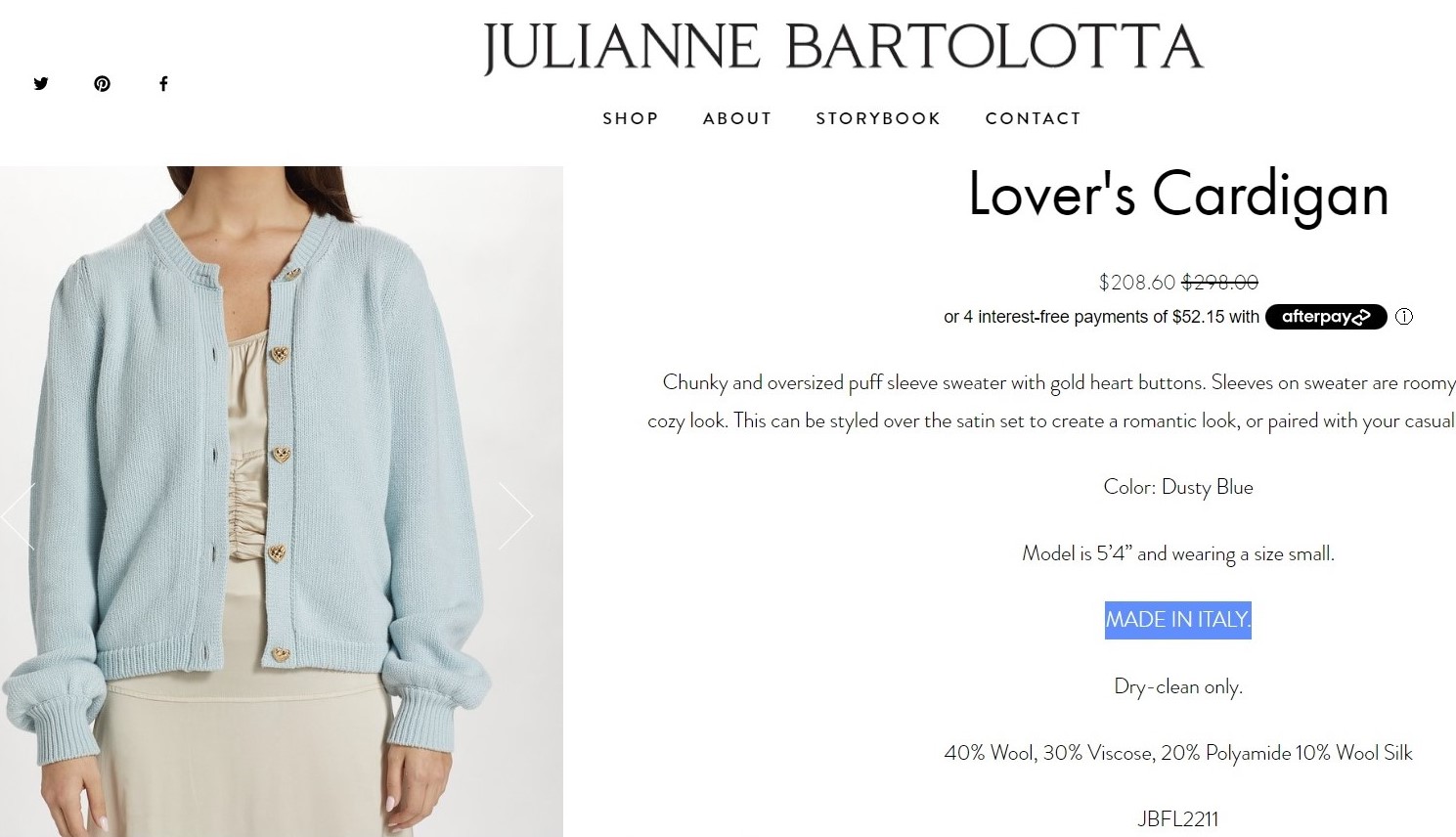
Sheng: All your companies’ products are “Made in Italy.” Why is that?
Julianne: While at Saks, we used factories in Italy, China, Spain, and other countries worldwide. When President Trump imposed higher tariffs on China, it pushed us to revisit our supplier base. We eventually decided to move almost everything to Italy because the tariff duties were lower and the “Made in Italy” label is very desirable. People love clothing made in Europe, especially Italy. Italian factories pride themselves on their craft. They are very artisanal and view fashion as art. The factories are also smaller, with about 25-50 people working on the main floor. Because of this, the garments are being handled by fewer people, so the workers will spend a lot of time taking care of each garment. So if you were to compare this to factories in Asia, for example, there would typically be hundreds of workers on the main floor, and each worker would have a particular job, sewing a specific part of the garment and passing it on to the next worker (i.e., productin line).
When branching off to start my own business, I took this sourcing knowledge with me and chose to work with Made in Italy factories. Because the factories in Italy are smaller, they are also able to offer lower minimums. Being a starting-out designer, it’s important not to over-buy. You don’t want to end up in a situation where you are sitting on inventory and can’t move it.
The “Made in Italy” label is also an homage to my Italian heritage. I am actually a dual citizen, so I have American citizenship as well as Italian citizenship. I have family in Italy that I have visited in recent years and communicate with regularly. Having my garments made in Italy is a way for me to give recognition to my family’s roots and uphold a standard of luxury at the same time.
When sourcing fabric for my garments, it would be typical to attend fabric shows in Milan and Florence to pick the best fabrics for my designs. Because of Covid, I could not travel to attend these shows, so I had yarn books and color cards sent to me instead. I was able to get pricing and pick the best suitable fabrics that way, but in the future, I plan to go and network with the mills as well.
Sheng: Can you share with us your sourcing practice? For example, what are your vendor selection criteria? What does the importing process look like?
Julianne: Currently I work with three factories in Italy, all specializing in different realms. One specializes in knitting sweaters, one works with woven fabrics, and the other works with jersey knits and stretch materials. I selected these factories because they were able to offer me low minimums. I was also given net payment terms, so I don’t have to pay my factories upfront for my clothes, which allows me to use selling time to help pay for the invoices.
When selecting my factories, I also made sure to know what other brands they work with. Big retailers like Saks have special ethics codes in place that the brand’s factories must comply with to sell to their stores. This includes ensuring that the factories don’t overwork their staff, the work environment conditions are safe, and the workers are compensated appropriately for their work. I made sure to use only reputable factories that produce for other luxury brands so that I comply with the same standards.
When I am working on costing for my styles, I have to contact my broker for each item’s landing factor to get my landed cost. A landing factor is a number that includes the exchange rate and duties on a specific style based on the type of article of clothing it is (blouse, jacket, pants, etc.), whether it is woven or knit, what the fabrication is, and where it is coming from. The landing factor for an Italian wool sweater could be different from the landing factor on an Italian wool coat. Landing factors usually range from .5 to 1.9. For example, if an item has a first cost of 30 euros and a landing factor of 1.5, the landed cost would come to $45. Landing factors can change over time, so it’s important that I check in with my broker every season to make sure I know what to expect when it comes time to ship.
My landing factors do not include the shipping cost. Because my orders are so small, and my production timeline is shorter than other big brands, it is in my best interest to air my goods. This isn’t the case for most brands, as airing goods can become quite costly. Usually, goods would be shipped by boat, but when Covid hit, there were fewer workers to unload the cargo ships in New York, which caused many retail orders to become very delayed. I wanted to avoid this altogether, and since my boxes are small, I chose to air my shipments instead. As I work on my production timeline and grow my business, I will probably have to move towards shipping my goods by boat.
Sheng: Regarding the apparel business environment in 2023, what are the opportunities and challenges? What trends shall we watch closely?
Julianne: The apparel industry right now is tough, but there are still opportunities for fashion businesses. Inflation has caused many people to rethink how much they are willing to spend on clothing. People want to feel like they will get their money’s worth on their purchases across the board. This is where social media marketing comes into play. If you can create a strong social media presence, and gain credibility through the right PR tactics, people will be more inclined to shop for your brand. Influencers are becoming modern world celebrities. If you see Danielle Bernstein wearing a dress from a small named brand, you suddenly give the brand credibility and want to check out their Instagram. With more people joining Tiktok, Instagram’s algorithm shifting towards reels, and influencers gaining more popularity, there are plenty of opportunities to spread the word; brands need to take advantage of these social media tools in the most compelling way.
It is becoming more common for people to start a side hustle in today’s world. Many people work from home and have the extra time and effort to put towards their small business. This means that the market for fashion startups is becoming saturated, but if you can create a brand that stands out from the rest, and put out engaging social media content, your audience can really grow and take off.
I would pay attention to how big and small brands are trying to take advantage of Tiktok and Instagram. Big brands are joining the Tiktok and Reels bandwagon and putting out more relatable content. They are using influencers, giving them discount codes to share, and sending them PR packages to show off on social media. It’s also interesting to see how small startup brands can utilize the same influencers and tactics to bring awareness to themselves. Social media creates a stage where small and big brands can coexist and compete for the same customers. Through social media, small brands can become more relevant, and big brands can try to stay relevant.
Sheng: Any reflections on your experiences at UD and FASH? What advice do you have for our current students who are preparing for their careers after graduation?
Julianne: Looking back on my college experience at UD and in the Fashion and Apparel Department(FASH), it feels like it was just yesterday! I double majored in Apparel Design and Fashion Merchandising, so I took a majority of the fashion classes offered, but if I could give any advice, I would say to be involved as much as you can. Utilize the amazing learning and career development opportunities that UD FASH offers you! Also, interning as much as possible– whether you get paid or not, it could be a valuable experience. I would suggest interning in a few different fields in fashion (if you can) to see what you like best before applying to jobs. For example, I had market week internships, product development internships, and fashion design internships, and I worked in retail. These experiences helped me decide what I liked and didn’t like.
Also, it is competitive out there, so don’t get discouraged! For example, the interview with Saks was a long process but I am so grateful that it worked out the way it did.
If you are a designer and want to start your own business, I would HIGHLY recommend working for someone else first. When you work for someone else, whether a big brand or a small startup, you learn the business’s ins and outs and network. It is much easier to start a business when you have connections then trying to start a business having to cold call vendors. Starting a business is also much easier when you understand the production calendar. Knowing what needs to be done and in what order will avoid a lot of mistakes! Put your time in, learn and grow, and you will be able to achieve great things!
–END–

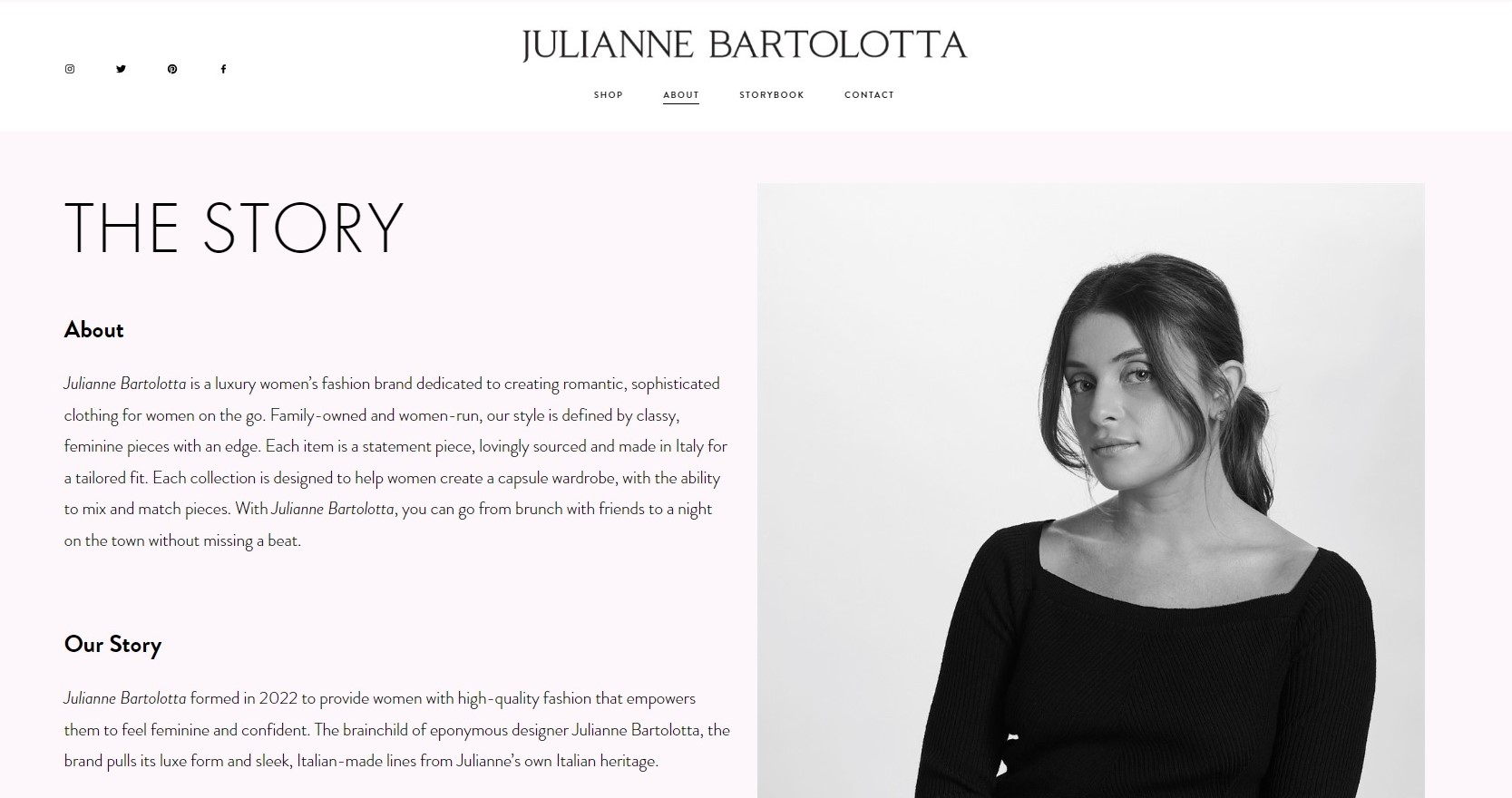
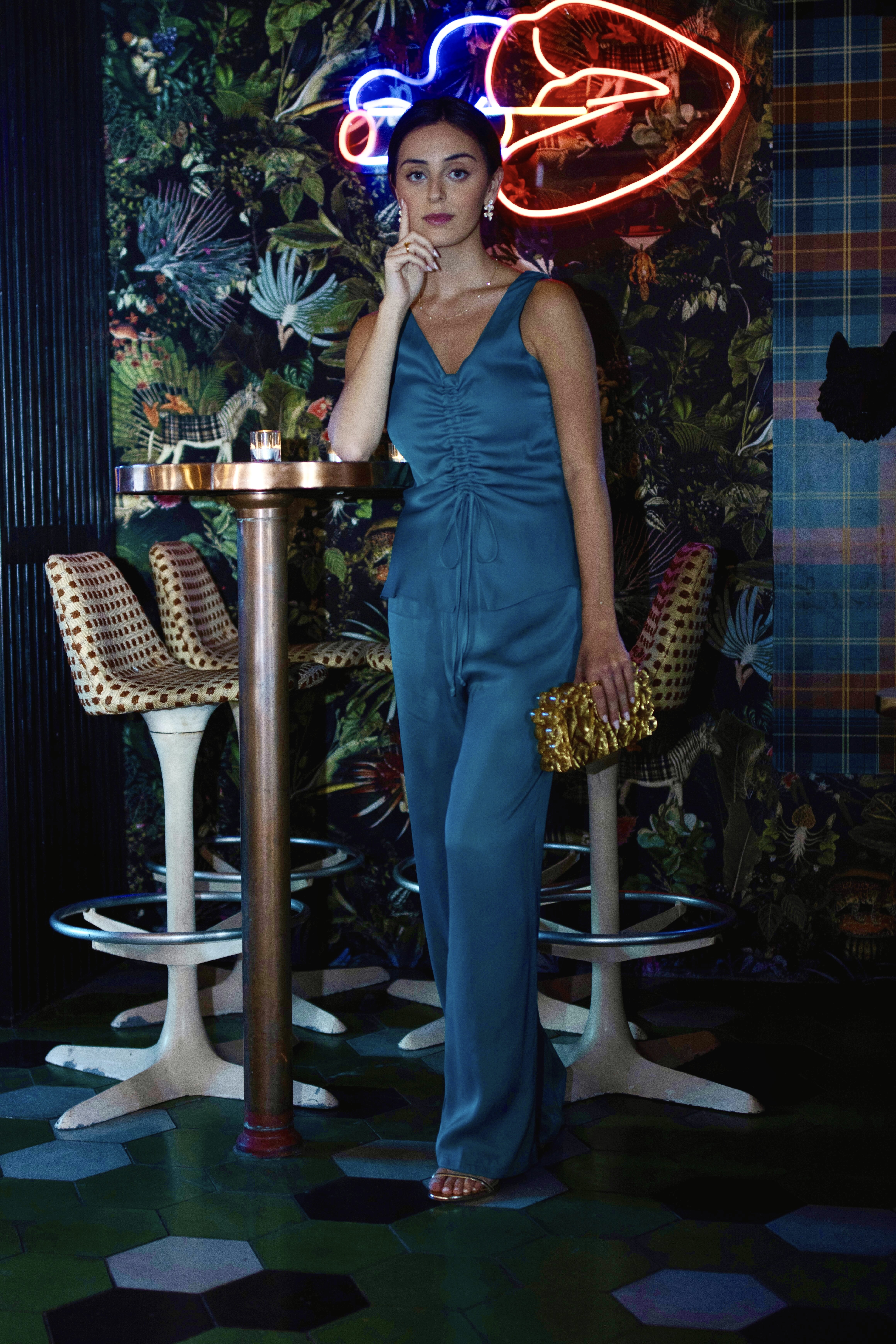


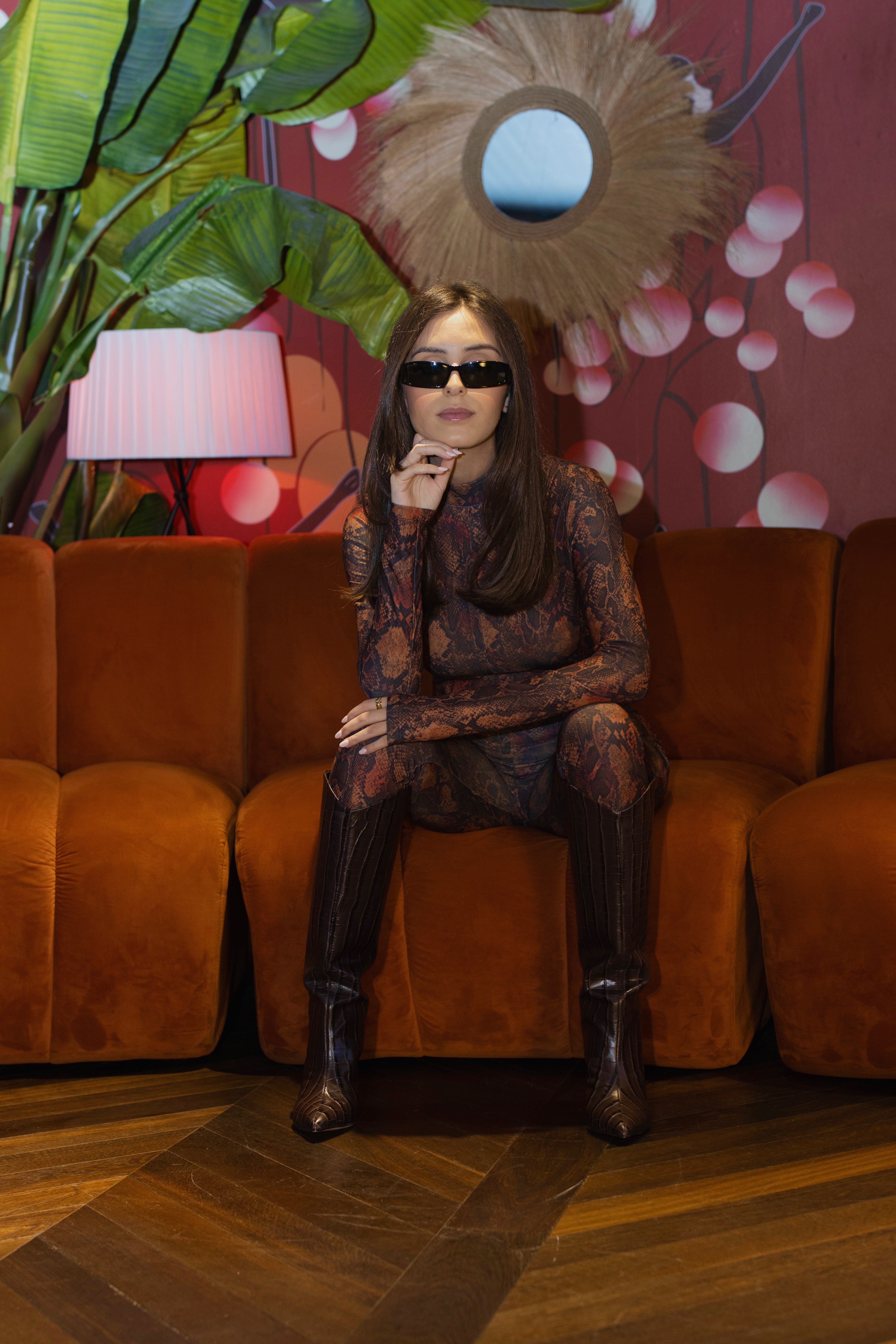
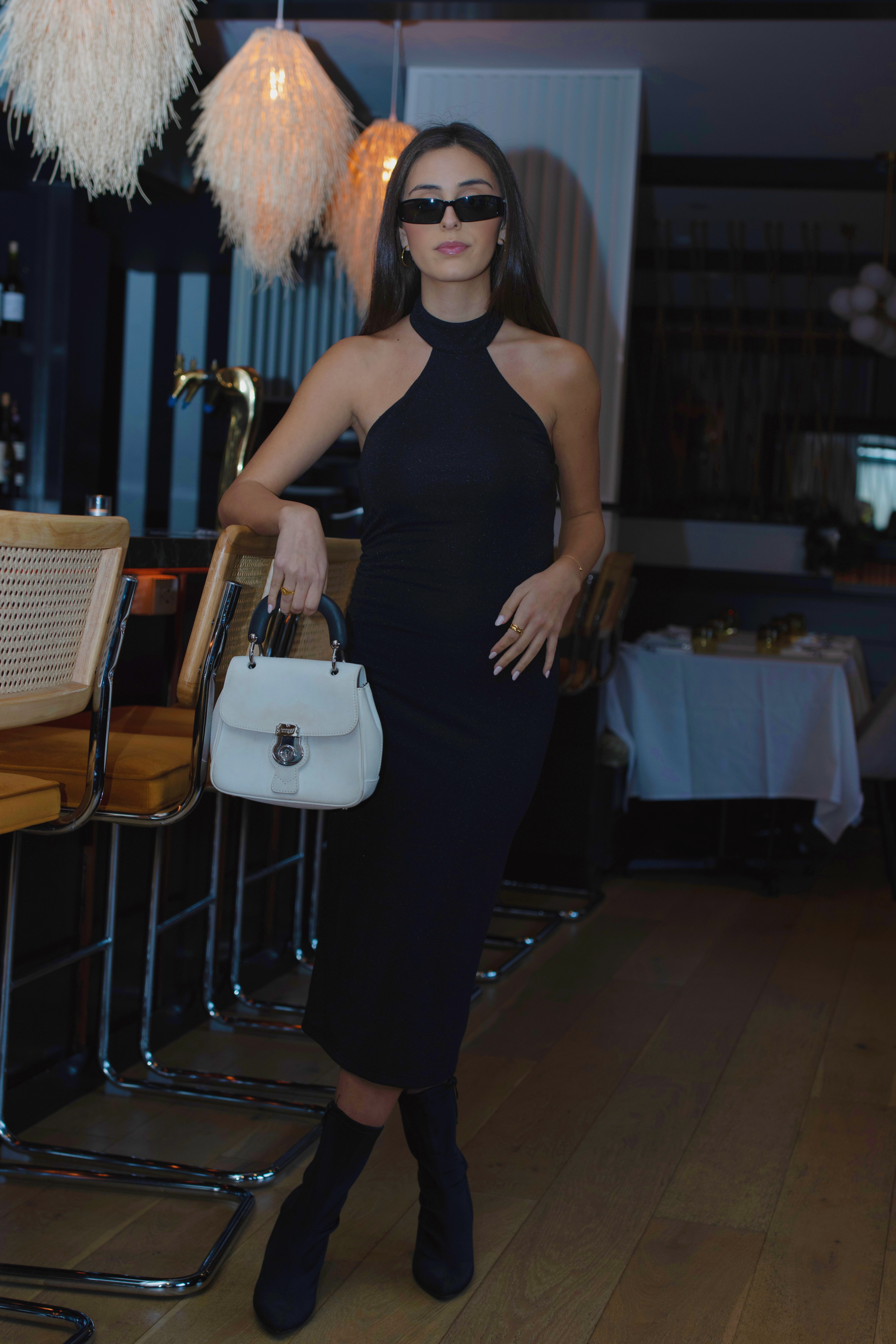
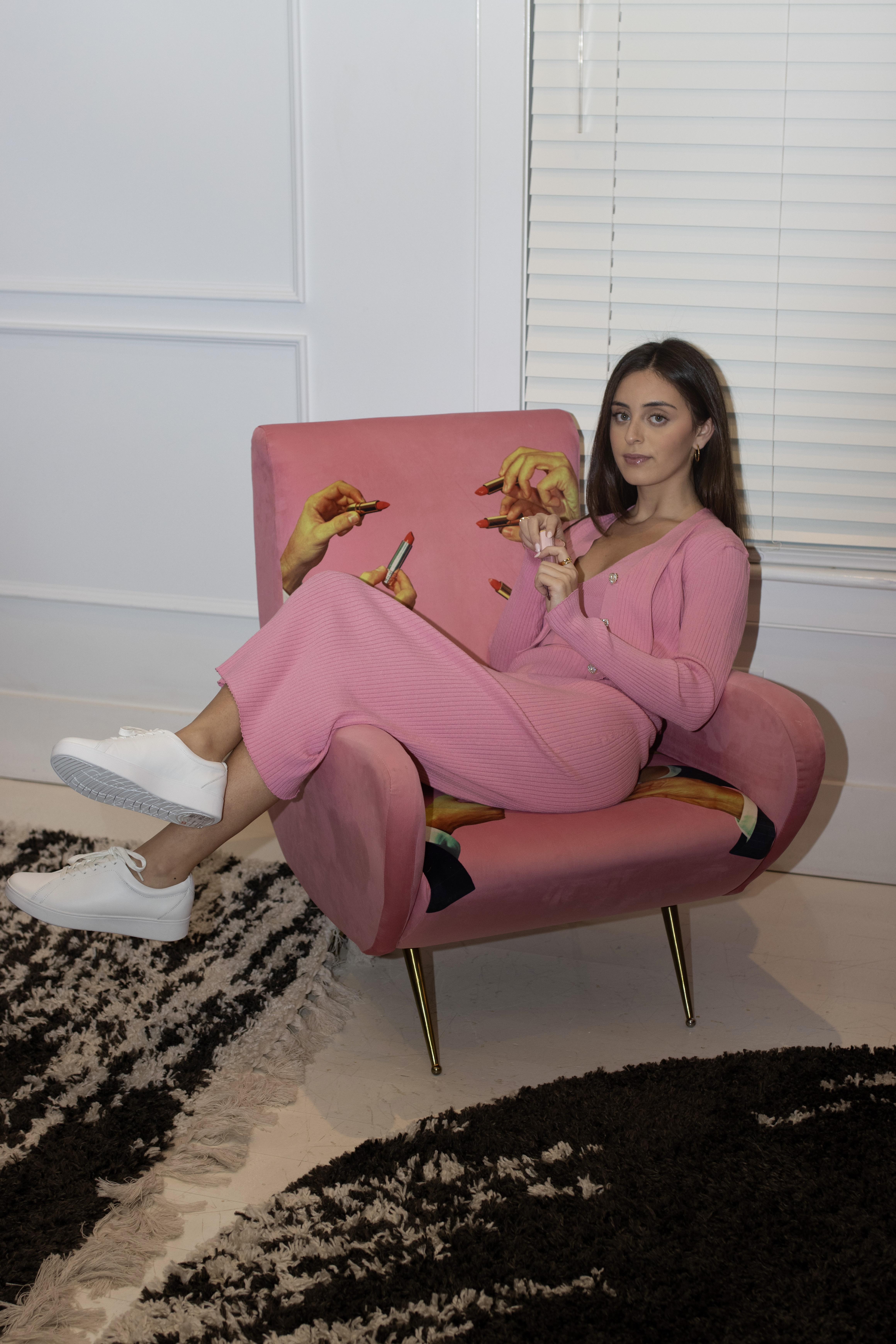

After reading this interview with Julianne Bartolotta, there were multiple things that stood out to me. First, I must say, I thought it was extremely thoughtful and heroic of Julianne to create masks for her fathers nursing home. In a time when masks were impossible to find, I know it was immensely appreciated, and it’s a great backstory to the start of her own entrepreneurial career. Now, I know that we have discussed the U.S China Tariff war many times in this class, but I found it fascinating to see how it affected real companies firsthand. As Julianne said, after President Trump imposed higher tariffs on China, her company was forced to revisit their supplier base, and ultimately made the decision to move all manufacturing to Italy as a result. Seeing how government policies affected small businesses such as Juliannes was compelling, and it made me wonder how many other companies pulled their business from China as a result of the tariff war. Finally, I was intrigued by Julianne’s selection process for her textile manufacturers. For instance, vocabulary such as “landing factor” and “net payment terms” are all new to me, and it made me realize there’s much more to costing internationally made apparel than just shipping, material, and labor costs.
great to hear!
As someone who was always interested in starting their own business at some point in their career, I really admire how Julia was able to do that, even after being furloughed from Saks. After looking through her website, I think her brand has a strong presence and I completely agree with the idea that when a consumer is going to spend a lot of money on a garment, it should stand out and be something special rather than be boring. I found the fact that she decided to make all of her garments in Italy very interesting as I did not know that the factories where much smaller and more attention to detail takes place in the country. I also think it is very smart of her to see what other companies her factories are working with to ensure sustainability compliance. I also found it interesting that smaller brands are turning to tiktok to gain more exposure and grow their brand, so I will definitely look out for that when I am on the app!
I found this read to be quite inspirational. Getting furloughed is something really difficult to overcome, but since Covid I have noticed many of these lay offs to be a blessing in disguise and she was able to start her own business. I definitely agree there is a strong brand presence there and based on her success and everything it is about, there is definitely room to grow and improve in the future. I think Julianne responds accordingly to her goals for herself and the industry, and with the passion and desire she obtains, her business can make a difference. It is really great to learn of her experiences and the relevantness of this class in future careers,
This was a very interesting interview to read and was very inspiring to learn about someone that lives in the same area as me in New York, and also was in a similar position as me at the University of Delaware. Julianne’s responses about her inspirations, sourcing practices, and just the way she was able to create her own business was extremely interesting. It really shows how relevant the information taught in this course will be in our futures as young professionals in the fashion industry. Aspects like tariffs, vendor selection criteria, and costs all have followed Julianne throughout her career and it is significant information needed to be considered when running a business. Overall, it was incredibly inspiring to hear about her experiences and how much impact this class will have on certain careers in the future.
I am fascinated by Julianne’s path in fashion and how she was able to work as a Product Development Assistant Manager at Saks Fifth Avenue right out of college. Incredibly, she played several roles in a small team during the entire design process. She also had the opportunity to design for a wide range of product categories, which I’m sure taught her a ton and helped her develop into a well-rounded designer. She appears to have climbed the Saks ladder rapidly and acquired all the necessary skills to start her clothing line. I admire how committed she was to help her father supply the nursing home with masks and how she made that work in her favor and that of others by allowing it to be an experimental process that resulted in a prosperous shop that many adored. I love her brand and what it stands for as a woman-owned, women-run, family business where her mom and sister are heavily involved. It was fascinating to hear how she used information from Saks about “statement-worthy” details having the highest sell-throughs across the market and how eventually, Saks decided to move almost everything to Italy because the tariff duties were lower and the “Made in Italy” label is very desirable. As a result, every item in her collection is designed by her and made in Italy and is also a tribute to her Italian heritage. It was also interesting to hear that she usually purchases textiles from fabric exhibitions in Milan and Florence. However, due to covid, she now relies on yarn books and color cards supplied to her. I’ll be flying to Milan soon for a fashion brand I’m interning for. We’ll be looking at textiles to use in their following collections. I’m even more eager to travel and explore this region for myself after reading about Julianne’s personal experience and appreciation of its materials.
This was such a great and insightful interview! Something that stood out to me was when Julianna was talking about her sourcing process and why she sources from “Made in Italy” factories. Back in our Unit 7 lectures discussing the state of the EU textile and apparel industry it makes sense why she would source from Italy. The workers are very authentic and tend to come from family-owned factories, which aids in making sure the manufacturing process is traceable. Overall, there was a lot of great information in this interview, and I think it is very beneficial for fashion students to read and take what they Julianna shared with us as we develop and grow in our own careers in the fashion industry.
I loved reading this exclusive interview article with Julianne Bartolotta. Reading how Julianne created her own LLC is very inspiring and interesting. The clothes we wear do allow the world to view who we are even without saying a word; our fashion statements can speak for ourselves. Europe is one of the largest textile export countries. 70% of Europe accounts for apparel imports. Developed Western European Union countries focus on high-end apparel products for production while also being key players in the European market value. Italy is an advanced European country and produces fashion oriented products.
This blog post was very inspirational! At least for me, the idea of starting my own fashion company seems impossible, just due to the sheer amount of competition in the industry. I’ve always figured that I would work for a well established brand upon graduating with my degree. However, getting to read about someone who was able to do it, from the same college as me, and is successful makes it seem a bit more feasible. As she said in her interview, I definitely agree that the UD FASH department has so many great opportunities and connection, and it’s important to use them and get as much as you can out of the classes you take!
Julianne’s story highlights the impact that government policies and tariffs can have on small businesses. The U.S-China Tariff War has been a major turning point for many companies, forcing them to reassess their supplier base and sourcing strategies. As Julianne’s experience shows, companies must consider various factors such as landing factor, net payment terms, and currency exchange rates when making decisions about international sourcing.
Additionally, the importance of ethical sourcing and environmental responsibility is also evident in Julianne’s selection process for textile manufacturers. Companies are increasingly recognizing the need to take into account the social and environmental impact of their operations, and this is reflected in the growing demand for sustainable and ethically produced products.
Overall, this interview provides valuable insights into the complex and ever-changing world of international trade and apparel sourcing, and highlights the need for companies to be proactive and adaptable in the face of new challenges and opportunities.
This whole article is truly inspiring to see the steps Julianne took to get to her dream, and her reflection on her time at UD. What stood out to me is the heritage that is attached to her business and how important family and culture are to her. The reasonings she provided for having her products sourced in Italy and how they connect to not only her identity, but lower tariffs and costs of production as well as having the highest quality luxury products is so special to learn about. I feel the authenticity and passion that Julianne has just from this interview and it is truly inspiring as a UD FASH student to see the impact she has made on the fashion industry with her goals and ambitions being so big.
The valuation process Julianne took in realizing that Italy was the place for her and all of the ethical factors that played a part is something that will definitely be apart of every entrepreneurs journey. Overall, this insightful conversation gives a real world example of international apparel sourcing and some of the challenges that may come along with being in the professional world after college.
I really enjoyed hearing Julianne’s story especially because she also went to Delaware and majored in Fashion Merchandising. It is really enjoyable hearing alumi’s success stories after graduating from the same college as I am graduating from this month. Julianne’s story was very inspiring and fascinating to hear, I loved how she turned such a terrible time within the world and created masks making such a positive impact on residents and staff at such a desperate time. However, more importantly I loved how followed her passion and used her knowledge within the industry to build her own ready-to-wear apparel brand. The most intriguing aspect of Julianne’s brand is that she only works with factories in Italy. Recognizing her family roots but also using her prior knowledge on President Trump imposing higher tariffs in China, she only sources from Italy. Even though her brand is new, Julianne has incorporated many strategic strategies that help her stand apart from other competitors especially apart from brands that have failed to overcome COVID issues. I overall really enjoyed this interview especially because it was fascinating to hear about how her brand came about but more importantly it’s one of the only brands I have heard of that only sources from Italy and considers the factors that many brands do not.
Reading this interview with Julianna was truly inspiring. It was great to see a fellow student who went to UD and majored in Fashion Merchandising become such a success. I was really surprised that she sources only from Italy, but then hearing her explanation as to why and how it relates to her heritage, it makes perfect sense. I always felt that creating a brand from scratch was unfathomable, solely because the industry is so jam packed and competitive that it seems out of reach. However, Julianna makes it seem extremely plausible (with a lot of hard work). I very much took her advice to her heart and will apply what she said now that I am about to graduate college. One piece of advice that she said that really stuck out to me was to pay attention to how certain brands are utilizing social media and posting on places such as instagram. I think companies look for employees who can utilize social media, so I will be looking out for this.
I found this article very interesting especially with a graduate of University of Delaware. This gives me more confidence for my future in the fashion industry. I didn’t think of Italy to be a place to source from and good to hear that her being at Saks was beneficial move. Also, it’s good to hear that Italy appreciates their workers and have their main focus is the garment. This helps not out pressure on the workers which is something I feel we don’t hear too much. I agree that a strong social media presence is a huge opportunity for a brand to come up with creative ideas and give their brand new consumers. I think Julia is a great source of knowledge and would love to hear more about her brand in the future!
Julianne’s sourcing strategy is really admirable as a small luxury start-up. I appreciate how informed her decision was to use factories in Italy to produce her products, not only because of the knowledge she gained at Saks but also as part of her family heritage. She has a story behind why she sources from Italy and has a relationship with the three factories she works with. I looked at Julianne’s website and I think it’s great that she emphasizes her connection to Italy and promotes that all of her products are made there. This also promotes traceability/how important sourcing is to the brand which I’m sure attracts consumers. It is not a common marketing tool although it should be. I want to know more about Julianne’s supply chain. Are her fabrics made in Italy as well? How far back can she trace her supply chain? I think it’d be great for her to add this to her website as well!
Julianne’s entrepreneurial journey began during the challenging times of the COVID-19 pandemic. After taking a sabbatical from Saks, she and her mother volunteered to sew masks for a nursing home, thus creating their own Etsy store. The positive impact on residents and employees inspired the idea of expanding it into a full-fledged clothing brand. Julianne Bartolotta is positioned as a women’s ready-to-wear brand focused on creating “statement pieces.” Each collection includes sweaters, dresses, skirts, shorts, shirts and leotards designed to make women feel unique, stylish and confident. The brand’s philosophy is rooted in providing high-quality clothing with valuable design. Julianne’s sourcing practice includes working with three specialist factories in Italy, each specialising in a different aspect of clothing production. The focus on net payment terms, ethical considerations and factory working conditions in line with industry standards reflects her commitment to responsible sourcing. Reflecting on her experiences at the University of Delaware and FASH, Julianne stressed the importance of engaging and taking advantage of learning and professional development opportunities. Internships in various fashion fields helped her identify her preferences. For aspiring entrepreneurs, she recommends gaining industry experience, building networks and understanding production schedules before taking the plunge.
This was a very insightful interview. As an aspiring designer, it is always interesting to hear from others experience especially from a fellow UD alum with her own business in the luxury category. It is interesting that she has her goods all made in Italy, but I would love to know more about where she sources her fabrics and trims from, and how she got to know and pick those factories in Italy without traveling and meeting with them during the pandemic. It is fascinating to read that she actively uses her knowledge gained from working at Saks to her launching her own luxury fashion company. The knowledge she shared is very useful as I would like to apply it to my own company in the near future, and wasn’t aware of how to go about sourcing and shipping costs with small batches for a fashion company that is small and isn’t making in mass.